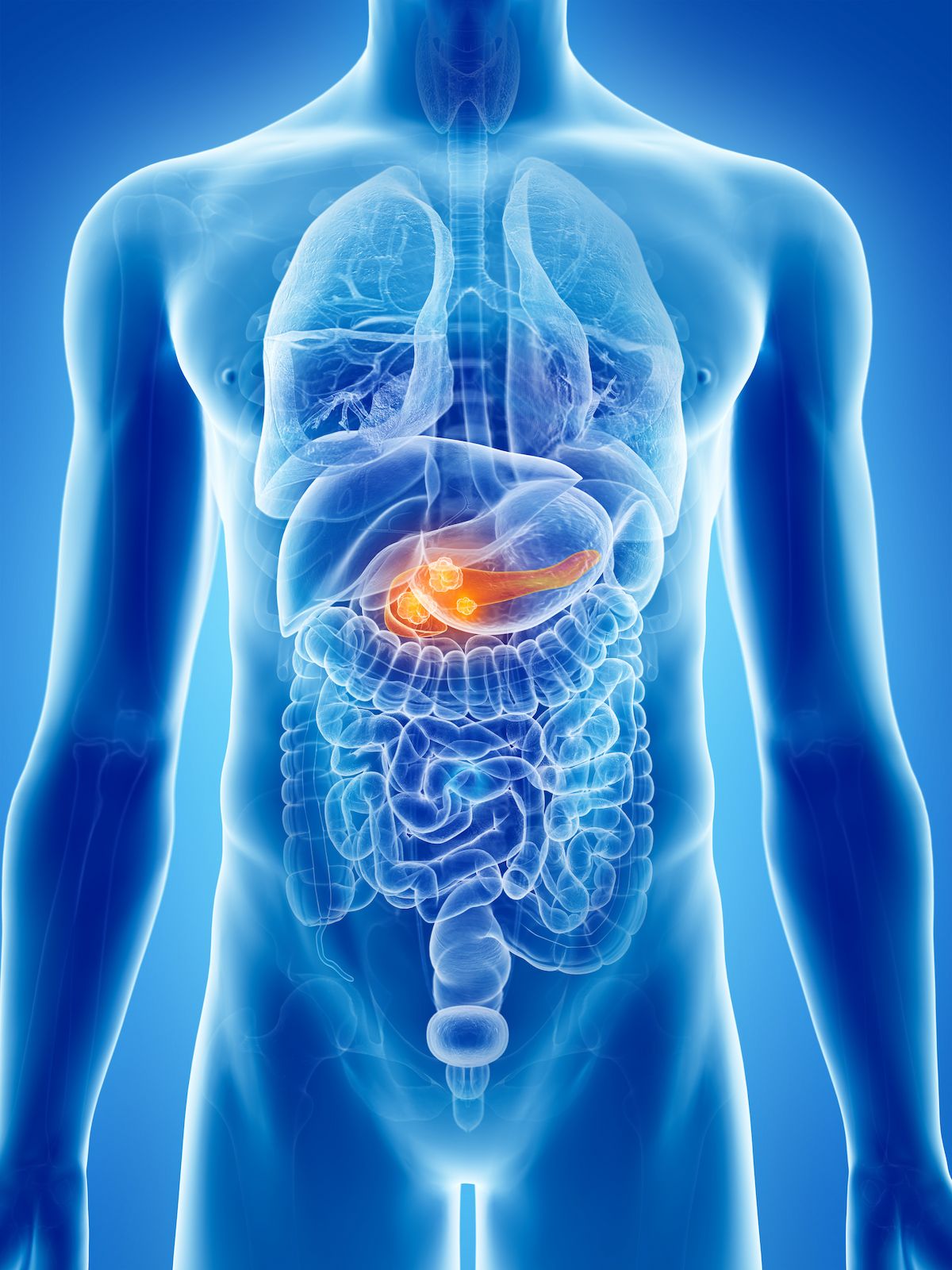JNJ-1900 Demonstrates Safety, Feasibility in Advanced Pancreatic Cancer
Among 20 patients with advanced pancreatic cancer and available circulating tumor mutational burden data, 40% exhibited increased tumor mutational burden.
A median local progression-free survival of 13.3 months was observed following completion of radiation in patients with locally advanced or borderline resectable pancreatic cancer.

JNJ-1900 (NBTXR3) demonstrated favorable safety, feasibility, and early efficacy outcomes in a small cohort of patients with locally advanced or borderline resectable pancreatic ductal adenocarcinoma (PDAC), according to a news release from the drug’s developer, Nanobiotix.1
Data from a phase 1 trial (NCT04484909) presented at the 2025 Annual Meeting of the European Society of Radiation Oncology revealed that JNJ-1900 showed injection feasibility in 22 patients treated with the agent for locally advanced or borderline resectable pancreatic cancer. Additionally, efficacy results showed that the median overall survival (OS) among this patient population was 23 months from diagnosis (95% CI, 17-not reached). A historical review of 144 patients with locally advanced pancreatic cancer at The University of Texas MD Anderson Cancer Center revealed that this group experienced a median OS of 19.2 months after receiving treatment with induction chemotherapy followed by radiotherapy with or without maintenance chemotherapy, the standard of care (SOC).
Further data showed that a median local progression-free survival (PFS) of 13.3 months was observed following completion of radiation. Notably, 2 patients with locally advanced pancreatic cancer achieved an R0 surgical resection.
“Patients with locally advanced or borderline resectable pancreatic cancer [have] a particularly urgent unmet need for therapeutic innovation that can provide a meaningful survival benefit with an acceptable safety profile,” Eugene J. Koay, MD, PhD, associate professor of gastrointestinal radiation oncology at MD Anderson, said in the news release.1 “We are encouraged by the results from the completed cohorts and look forward to the continued evaluation of JNJ-1900 in combination with standard-of-care chemoradiation after induction chemotherapy.”
Patients in the phase 1 study with either locally advanced (n = 20) or borderline resectable (n = 2) pancreatic cancer were treated with intratumoral NBTXR3 on day 1 of treatment following induction chemotherapy. Between days 15 and 43 of treatment and in the absence of progressive disease or unacceptable toxicity, patients underwent 15 fractions of radiation therapy.2
The primary end point of the phase 1 study was to find the recommended phase 2 dose of radiotherapy-activated NBTXR3. Secondary end points included safety, injection feasibility, antitumor responses, and time-to-event outcomes. Exploratory end points included pharmacokinetics, resectability conversion rates, surgical outcomes, and biomarkers of response.
Exploratory biomarker analyses data showed that among 20 patients who had available circulating tumor mutational burden (TMB) data, 40% exhibited increased TMB. An association between increased circulating TMB and improved local PFS and OS was observed. Furthermore, normalization of CA19-9, a surrogate for OS benefit, was observed in 59% of patients. A historical review of 243 patients with locally advanced pancreatic cancer at MD Anderson revealed that normalization of CA19-9 was observed in 17% of patients treated with the SOC treatment.
“Our collaboration with MD Anderson has always been driven by a shared commitment to exploring bold new approaches for patients with high unmet need,” Louis Kayitalire, MD, chief medical officer at Nanobiotix, expressed in the news release.1 “Given the poor survival rates in [locally advanced] and [borderline resectable pancreatic cancer], the results from this phase 1 study give us confidence in the potential of JNJ-1900 to serve as a meaningful addition to the treatment landscape.”
JNJ-1900 was developed as an oncologic agent composed of functionalized hafnium oxide nanoparticles injected intratumorally and activated by radiotherapy. Its mechanism of action is designed to induce tumor cell death when activated by radiotherapy, triggering adaptive immune response and long-term anticancer memory.
The FDA granted clearance for an expanded study that includes a new cohort combining JNJ-1900 with the SOC concurrent chemoradiation following induction chemotherapy. The study has begun treatment for its first patient in the new cohort, and recruitment is currently ongoing.
References
- Nanobiotix announces full results from completed phase 1 study evaluating JNJ-1900 (NBTXR3) in pancreatic cancer. News release. NANOBIOTIX. May 5, 2025. Accessed May 5, 2025. https://tinyurl.com/4rjst9bk
- NBTXR3 activated by radiation therapy for the treatment of locally advanced or borderline-resectable pancreatic cancer. ClinicalTrials.gov. Updated April 9, 2025. Accessed May 5, 2025. https://tinyurl.com/4xymfmpc